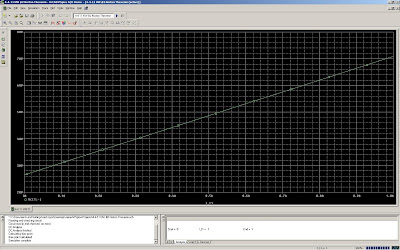The purpose of this lab was to practice measuring phase differences between AC signals that have the same frequency. Professor Mason set up his USB-based oscilloscope and demonstrated the exercises. We started with two different sinusoidal signals; they had the same frequency with different Vrms’s and a phase shift.
We first set the function generator to give a 1KHz signal with 6V peak-to-peak. We calculated the anticipated Vrms:
3V/sqrt(2) = 2.12V
This agreed with the DMM’s measured value of 1.97V. We then calculated the complex impedance of the 100nF capacitor in our circuit:
Z=1/jwC = -716914.16j ohms
Next, we connected everything according to this schematic:
We then used the USB oscilloscope to measure peak-to-peak capacitor voltage on CH2: V=2V.
We also measured Vrms using the DMM and checked to make sure the measured and predicted values matched up.
Measured Vrms = 0.61V
Expected Vrms = 1/sqrt(2) = 0.707V
Our last measurement was the time difference between the two waveforms. We used the markings on the oscilloscope and counted 90uS of shift. From there we could calculate the phase angle between the two channels’ signals:
Φ = (90uS)(2π/450uS) = 1.26 radians
With the two signals overlapped on the oscilloscope, we could see that capacitor voltage led resistor voltage.































